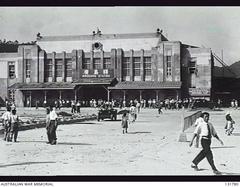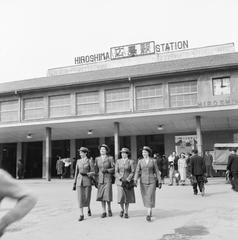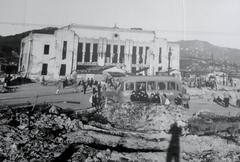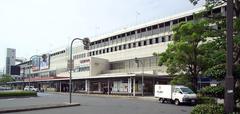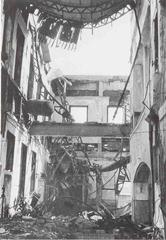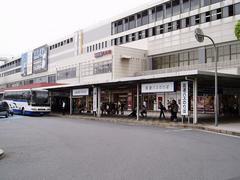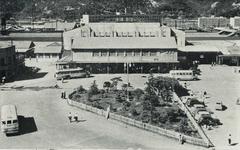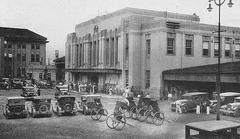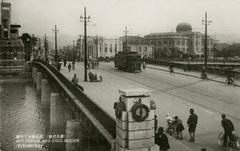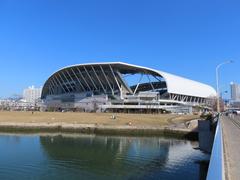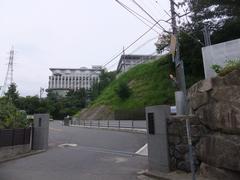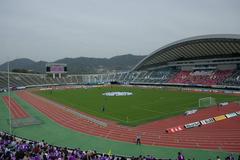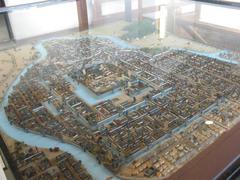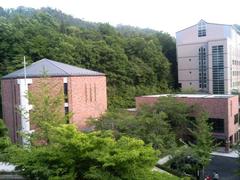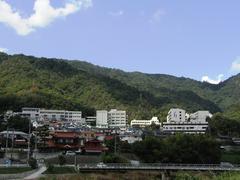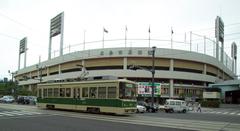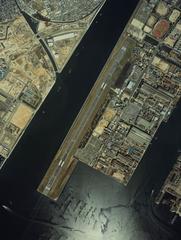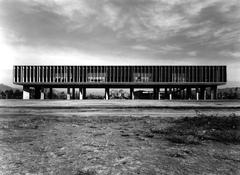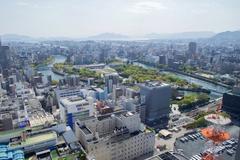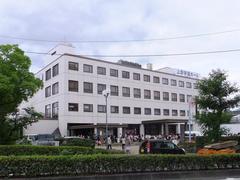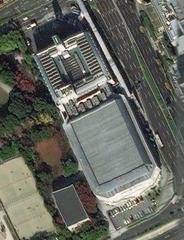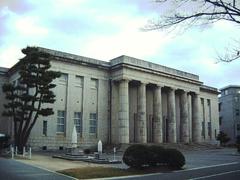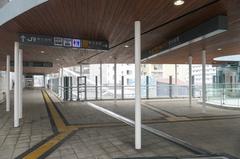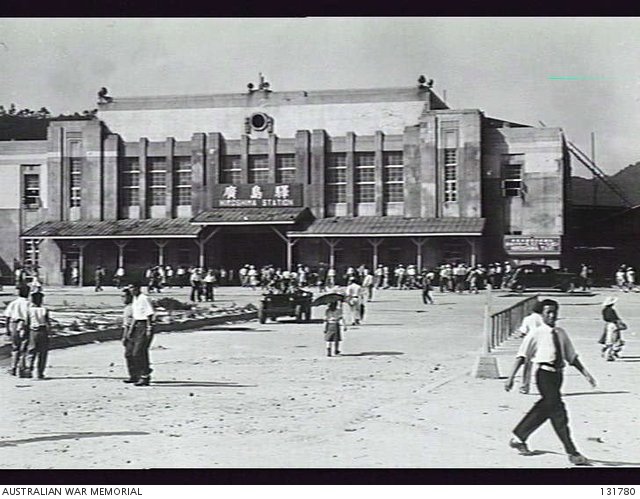
Hiroshima Station Visiting Hours, Tickets, and Travel Guide
Date: 14/06/2025
Introduction
Hiroshima Station is a cornerstone of travel in western Japan, serving as a dynamic gateway to the city’s profound history, vibrant culture, and enduring message of peace. Established in the Meiji era, the station has evolved from a strategic military outpost to a state-of-the-art transportation hub. Today, it connects high-speed Shinkansen, regional JR lines, trams, and buses, making it an essential first stop for exploring Hiroshima’s rich heritage and modern attractions (city.hiroshima.lg.jp; Wikipedia). This guide provides a comprehensive overview of Hiroshima Station—including its history, facilities, visiting hours, ticketing options, nearby attractions, accessibility features, and practical travel tips—to ensure your visit is seamless and memorable.
Table of Contents
- Introduction
- Historical Overview
- Hiroshima Station: Hours & Ticketing
- Station Layout, Facilities, and Connectivity
- Visitor Tips & Accessibility
- Accommodation Near Hiroshima Station
- Nearby Historical Sites: Hours & Tickets
- Seasonal and Cultural Insights
- Frequently Asked Questions (FAQ)
- Conclusion
Historical Overview
Early Development & Strategic Importance
Hiroshima’s transformation into a major urban center began in the Meiji era (1868–1912), leveraging its strategic location for both military and economic expansion. The establishment of the 2nd Army Headquarters and the subsequent opening of the Kure Railroad Line in 1903 solidified Hiroshima’s role as a crucial transportation and military hub, linking the city to the Kure Naval Port and facilitating rapid urbanization (city.hiroshima.lg.jp; edudwar.com).
Arrival of Railways & Urban Growth
The early 20th century marked the introduction of electric streetcars, with the Hiroshima Electric Railway launching operations in 1912. Four initial lines, including the Hiroshima Station-Kamiya-cho-Aioi-bashi Bridge route, replaced horse-drawn carriages and became the backbone of urban transportation. The growing tram network, expanded by lines to Miyuki-bashi Bridge and Ujina, fueled economic development and made Hiroshima Station a linchpin in everyday city life. The central Hatchobori district also blossomed as a commercial and shopping hub, reinforcing the station’s pivotal role (city.hiroshima.lg.jp).
Wartime Significance
By the 1940s, Hiroshima Station was a symbol of strategic importance, serving as a key node for military logistics. This centrality contributed to Hiroshima being chosen as the first city to experience the atomic bomb on August 6, 1945. The blast devastated the area around the station, yet some infrastructure—including the resilient hibaku densha (atomic bomb survivor streetcars)—endured and later played a part in the city’s remarkable recovery (edudwar.com; mirasafety.com; japan.travel).
Post-War Reconstruction & Modernization
After WWII, Hiroshima was rebuilt with a focus on peace, accessibility, and green spaces. The Hiroshima Peace Memorial City Construction Law of 1949 laid the foundation for comprehensive redevelopment. The current Hiroshima Station building, completed in 1965, marked a new era. The 1964 electrification of the Sanyo Main Line and the 1975 opening of the Sanyo Shinkansen integrated Hiroshima into Japan’s national rail network, enhancing its role as a transportation gateway (blogs.worldbank.org; city.hiroshima.lg.jp).
Hiroshima Station: Hours & Ticketing
- Station Hours: Open daily from approximately 5:00 AM to midnight.
- Ticket Counters: Staffed from 6:00 AM to 10:00 PM.
- Automated Ticket Machines: Available 24/7 for Shinkansen and JR lines.
- IC Cards: Major IC cards (ICOCA, Suica, Pasmo) are accepted (MyTravelBuzzG).
- Online Booking: Tickets can be purchased in advance through the JR West website or travel platforms.
- JR Pass: Accepted for international visitors (excluding Nozomi and Mizuho Shinkansen).
- Special Passes: Hiroshima-wide transit passes and sightseeing day passes are available, such as the Meipuru-pu Loop Bus day pass (MyTravelBuzzG).
Accessibility: Elevators, escalators, tactile paving, and staff assistance are provided throughout the station.
Station Layout, Facilities, and Connectivity
Entrances & Structure
- North Entrance (Shinkansen): Direct access to high-speed bullet train platforms.
- South Entrance: Gateway to local trams, buses, and city center.
A major redevelopment, including a 20-story building, is underway and will further integrate shopping, dining, a cinema, and a hotel, alongside an elevated tram platform for seamless transfers (Japan Station).
Platforms & Transfers
- Shinkansen Platforms: Upper levels, accessible via escalators/elevators.
- JR Local Platforms: Lower levels, serving the Sanyo Main, Kabe, and Geibi Lines.
- Tram Platforms: Located outside the South Entrance; to be relocated to the 2nd floor for direct station integration (Wikipedia).
Facilities
- Ticketing: Staffed offices (Midori no Madoguchi) and automated machines at both entrances.
- Waiting Areas: Comfortable lounges, including facilities at Hotel Granvia Hiroshima (JR West Station Map).
- Shopping & Dining: The ekie complex offers over 100 shops and eateries, with local specialties like okonomiyaki, regional sake, and Momiji manju (trainstation.world).
- Luggage Services: Coin lockers (24/7), baggage room, and a dedicated left-luggage facility (trainstation.world).
- Tourist Information Center: Multilingual support, maps, and travel advice (triptojapan.com).
- Other Amenities: Free Wi-Fi, ATMs, currency exchange, accessible restrooms, parking, lost and found, bicycle/e-scooter rental, and rental car counters.
Transportation Links
- Shinkansen: Direct trains to Tokyo (4 hrs), Osaka (1.5 hrs), Hakata/Fukuoka (1 hr) (Japan Travel).
- Local/Regional JR Lines: Sanyo Main Line, Kure Line, Geibi Line.
- Hiroden Trams: Six lines radiate from Hiroshima Station, connecting to the Peace Memorial Park, Hiroshima Port (Miyajima ferries), downtown, and more.
- Meipuru-pu Loop Bus: Day passes and free rides for JR Pass holders (MyTravelBuzzG).
- Airport Limousine Bus: ~50 min to Hiroshima Airport (Japan Travel).
- Ferry Access: Hiroden trams to Hiroshima Port for Miyajima ferries.
Visitor Tips & Accessibility
- Barrier-Free Design: Elevators, ramps, tactile guides, and accessible restrooms are standard (JR West Station Map).
- Multilingual Signage: Japanese, English, Chinese, Korean.
- Efficient Transfers: Clearly marked gates and minimal walking distances between platforms.
- Safety: 24-hour security, CCTV, and first aid stations.
- Luggage: Multiple lockers and a left-luggage facility (payment by cash, IC card, credit card).
Accommodation Near Hiroshima Station
Directly Connected or Adjacent:
- Sheraton Grand Hiroshima Hotel: Luxury, panoramic views, fitness center, pool (wanderlustdesigners.com).
- Hotel Granvia Hiroshima: Mid-range, direct station access, large rooms, amenities (wanderlustdesigners.com).
- APA Hotel Hiroshima-Ekimae Ohashi: Budget, newly opened options with interconnecting rooms (itravelblog.net).
Other Nearby Hotels: Randor Hotel Hiroshima Prestige, Hilton Hiroshima, Chisun Hotel Hiroshima, EN HOTEL Hiroshima, Urbain Hiroshima Executive, Sumiya Spa & Hotel (booking.com).
New Openings: Hotel Granvia Hiroshima Minamimon (March 2025), FAV HOTEL Hiroshima Heiwa Odori (itravelblog.net).
Tip: Book early during cherry blossom season, Golden Week, or around August 6th.
Nearby Historical Sites: Hours & Tickets
Peace Memorial Park & Museum
- Park Hours: 6:00 AM–6:00 PM (Apr–Sep); 6:30 AM–5:00 PM (Oct–Mar)
- Museum Hours: 8:30 AM–6:00 PM (Mar–Nov); 8:30 AM–5:00 PM (Dec–Feb); closed Dec 30–31
- Tickets: 200 yen (adults), 100 yen (seniors/high school), free for young students
- Accessibility: Wheelchair accessible, ramps/elevators (Poppin Smoke)
Hiroshima Castle
- Hours: 9:00 AM–6:00 PM (Mar–Nov); 9:00 AM–5:00 PM (Dec–Feb)
- Tickets: 370 yen (adults), 180 yen (children)
- Accessibility: Elevators available, some areas limited
Shukkeien Garden
- Hours: 9:00 AM–6:00 PM (Mar–Nov); 9:00 AM–5:00 PM (Dec–Feb)
- Tickets: 260 yen (adults), 150 yen (children)
- Accessibility: Wheelchair-friendly paths (Japan Local and Fun Experiences)
Miyajima & Itsukushima Shrine
- Access: Train + ferry (JR Pass covers most of the journey)
- Shrine Hours: ~6:30 AM–6:00 PM (varies)
- Tickets: ~300 yen
- Accessibility: Wheelchair access on main routes; ferry boarding may need assistance (Live Japan)
Seasonal and Cultural Insights
- Best Seasons: Spring (cherry blossoms) and autumn (fall foliage)
- Summer: Hot, humid, festivals & fireworks
- Winter: Mild, fewer tourists
- Rainy Season: Mid-June to mid-July
- Special Dates: August 6 Peace Memorial Ceremony—book ahead (Poppin Smoke)
Culture: Hiroshima is renowned for its peace initiatives, welcoming spirit, local cuisine (okonomiyaki, oysters), and vibrant festivals (Japan Local and Fun Experiences).
Frequently Asked Questions (FAQ)
Q: What are Hiroshima Station’s operating hours?
A: The station is open from ~5:00 AM to midnight; ticket counters generally from 6:00 AM to 10:00 PM.
Q: How do I purchase tickets?
A: Buy at counters, automated machines, or online. IC cards and the JR Pass are accepted for most services.
Q: Is the station accessible for travelers with disabilities?
A: Yes; barrier-free design, elevators, tactile paving, and multilingual staff/support.
Q: Are there guided tours?
A: Yes; numerous English-language and specialty tours for all major sites.
Q: What’s the best area to stay?
A: Near Hiroshima Station for transit convenience, especially for first-time visitors and those with early/late trains (itravelblog.net).
Conclusion
Hiroshima Station is more than a transit point—it’s the heart of a city that has transformed adversity into an enduring message of peace. With its rich history, modern amenities, efficient transportation links, and proximity to world-renowned historical sites, Hiroshima Station ensures a smooth, inspiring, and accessible experience for every traveler. Plan ahead for seasonal highlights, leverage digital resources like the Audiala app, and immerse yourself in Hiroshima’s unique blend of tradition and innovation for a truly memorable journey.
For maps, updates, and further details, visit the official JR West Station Map (PDF) and Japan Station redevelopment news.
Related articles:
Images and virtual tours are recommended for a richer experience. For more travel insights, download the Audiala app and follow us on social media!
Sources and Further Reading
- Exploring Hiroshima Station: Visiting Hours, Tickets, and Historical Sites, 2025, City of Hiroshima (city.hiroshima.lg.jp)
- Complete Guide to Hiroshima Station: Layout, Facilities, and Transportation Options, 2025, Japan Station (Japan Station)
- Hiroshima Station Visitor Guide: Hours, Tickets, Amenities, Historical Sites, and Accommodation, 2025, TrainStation.World (trainstation.world)
- Hiroshima Visiting Hours, Tickets & Top Historical Sites to Explore, 2025, Poppin Smoke (Poppin Smoke)
- Hiroshima Station Information, 2025, Wikipedia (Wikipedia)
- Hiroshima Travel Guide, 2025, Japan Travel (Japan Travel)
- Hiroshima Day and Atomic Bomb History, 2025, EduDwar (edudwar.com)
- Hiroshima Post-War Urban Development Lessons, 2025, World Bank Blogs (blogs.worldbank.org)
- Hiroshima Safety and Radiation Information, 2025, Mira Safety (mirasafety.com)
- Hiroshima Tram and Transportation Details, 2025, YoMetro (YoMetro)
- Hiroshima Travel Tips and Itinerary, 2025, MyTravelBuzzG (MyTravelBuzzG)
